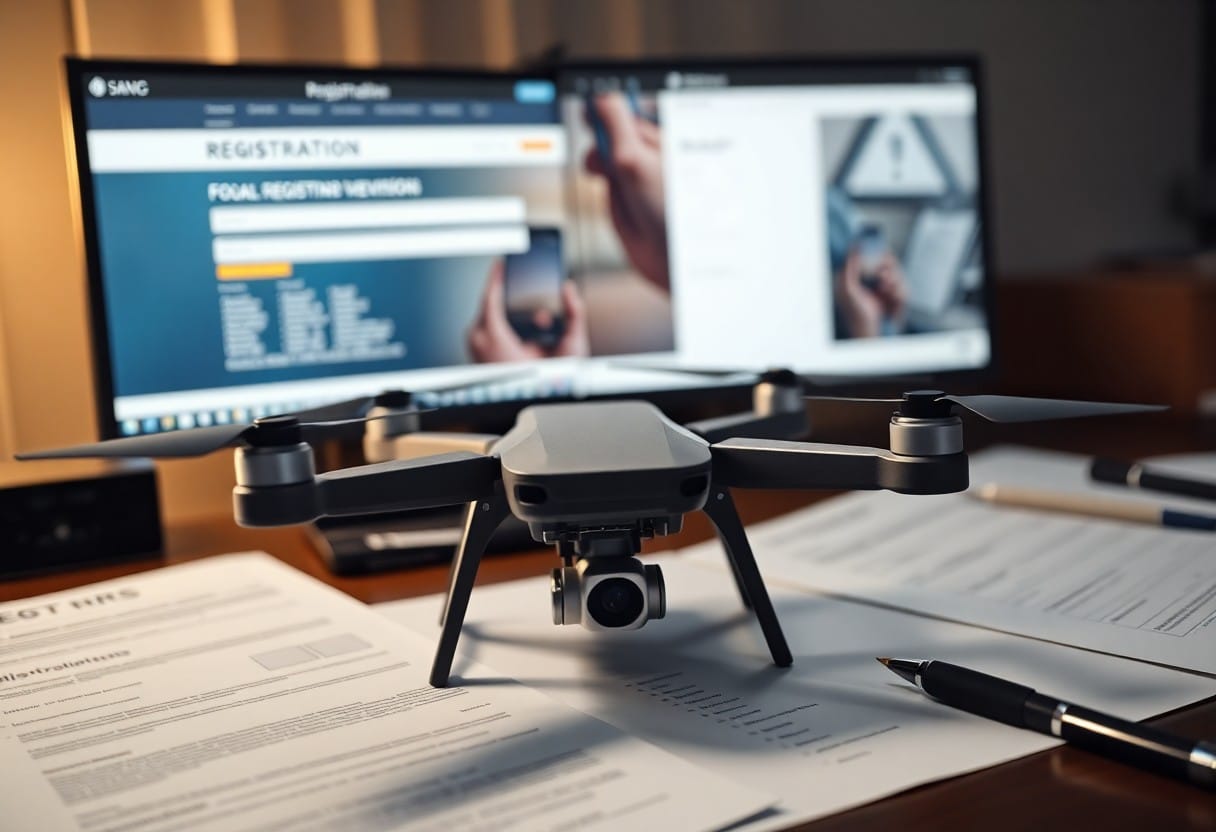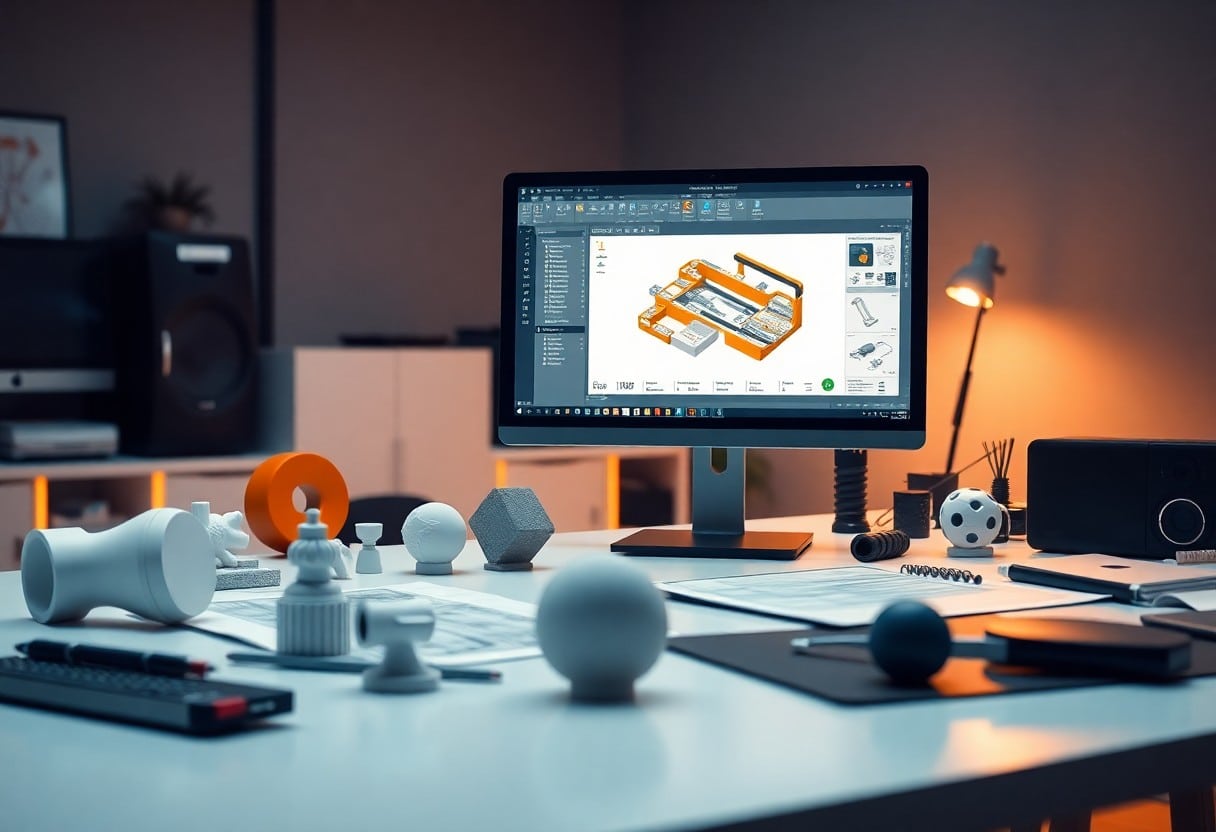5 Key Steps to Improve Your Drone Photography Skills
If you want to improve your drone photography skills, this post will help you master theFive Key StepsThese tips will help you improve the quality of your images whether you are a beginner or an experienced photographer. Whether you're a beginner or an experienced photographer, these tips can take the quality of your images to the next level. Learn aboutSafe handlingThe importance of compositional skills and post-processing will make your work better and more professional. With these tips, you will not only improve your photography skills, but also stand out from the competition.
Key Points:
- Choose the right equipment:Invest in high quality drone and camera equipment to improve image quality.
- Understand basic techniques:Mastering the use of camera angles, composition and lighting can enhance the performance of your movie.
- Plan your shooting route:Plan your shooting route beforehand to ensure you capture the best shots.
- Apply post-editing:Learn editing techniques to enhance the visual appeal and professionalism of your videos.
- Keep learning:Attend professional courses and workshops to stay up-to-date with the latest technologies and trends.
- More practice:Regular shooting practice to improve operational skills and creative expression.
- Pay attention to the statute of limitations:Ensure compliance with the relevant laws and regulations governing drone flights to ensure safety.
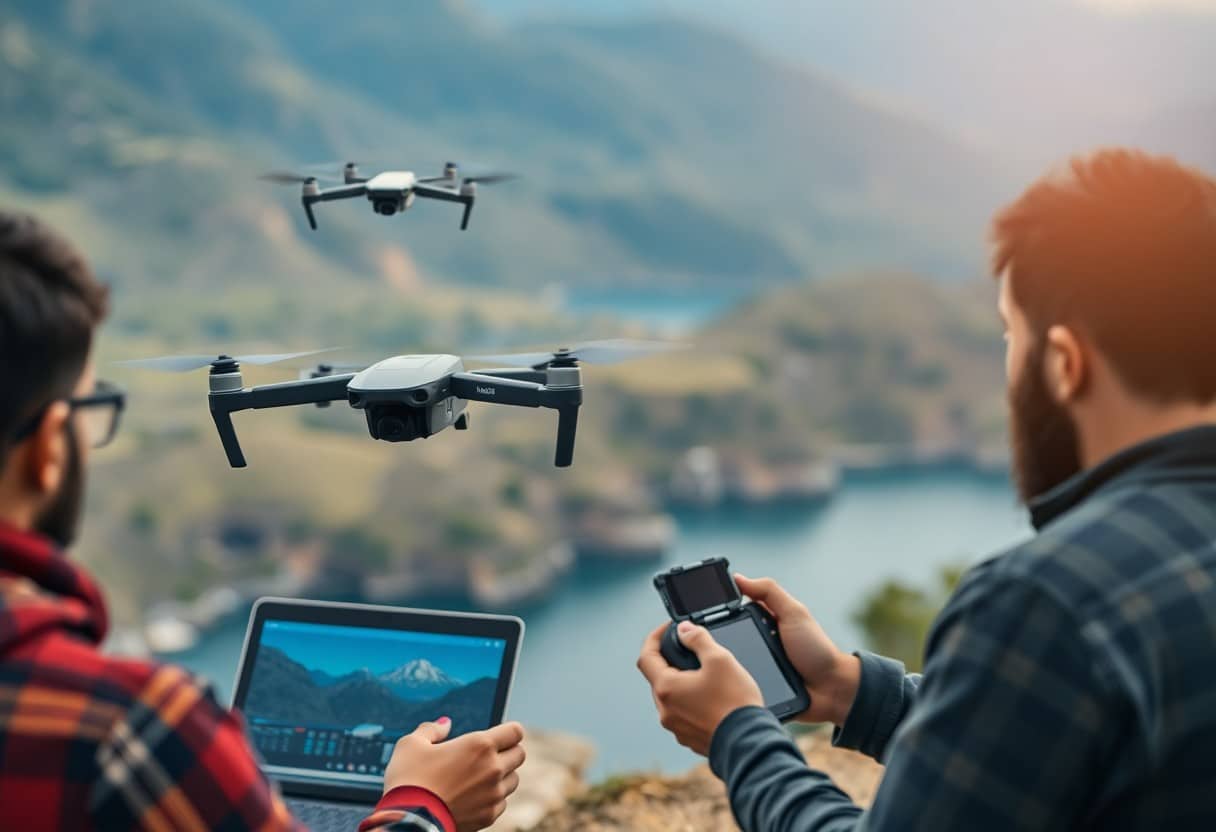
Understanding Drone Fundamentals
Before improving your drone photography skills, it is important to understand the basic principles of a drone. A drone is a flying machine that is controlled remotely or by an automatic control system. You need to familiarize yourself with its structure, functions, and operation so that you can control it better and capture high quality images. In addition, understanding the flight kinetics, battery management and camera settings of a drone will help you improve your photography skills and capture more beautiful images.
Necessary Equipment
To start drone photography, you will need some basic equipment including the drone itself, a high resolution camera, extra batteries and memory cards. In addition, a suitable stabilizer and remote control are essential to ensure that your filming process is smooth and accurate. As your skills improve, you may consider adding other accessories such as filters and GPS systems to further enhance your shots.
Safety Requirements
During the drone shoot, follow theSafety RequirementsIt's important. You must be aware of the flight rules in your country or region and make sure the drone is kept away from people and sensitive areas. In addition, checking weather conditions and battery status beforehand will avoid potential hazards. Maintaining control of your drone at all times ensures that you can create great work in a safe manner.
comply withSafety RequirementsIt's not just a legal requirement, it's the responsibility of every drone operator. Make sure your drone does not fly over sensitive areas such as private property, schools or hospitals to avoid nuisance or legal disputes. Stay within sight of your drone and check the battery status in time to avoid losing control due to low battery. If you are flying in certain areas, you will also need to get aLocal government licensesThis ensures that you stay within the boundaries of the law and are able to focus on filming without having to worry about legal issues.
Mastering Flying Skills
To improve your drone photography skills, you must firstMastering Flying Skills. Understanding the different flight modes and controls can help you produce more creative and professional looking images. Regularly practice and study the work of the pros, such as here.10 Steps to Mastering the Rules for Commercial Use of DronesThis will help you to keep improving.
Navigational Skills
Good navigation skills are the key to a successful shoot. Make sure you are well aware of your surroundings becauseObstacles, terrain and weather conditionsAll may affect the flight plan. Learn to use the drone's navigation system and conduct test flights in different environments to improve your agility and reaction time.
Stability Control
In order to produce a smooth and attractive image, theStability ControlIt's important. The stability of your drone depends on the design of the aircraft and your skill in handling it. Learn to use attitude control and GPS positioning systems. Regularly check the performance of your machine to ensure that it remains stable in all conditions.
Stability control is not only dependent on technique, it also requires your experience and handling sensitivity. When you are flying, especially in theStrong winds.Practice fine control in situations where the environment changes rapidly. Learning to adjust your flight path and attitude in real time during the shooting process will give you more freedom in your creation and result in more compelling images.
Diagrams and Structures
Composition and framing are key elements in enhancing your drone photography skills. Through proper composition, you can effectively guide the viewer's eye and enhance the beauty of your image. In addition to choosing a theme, it is also important to carefully consider your surroundings and the placement of elements to enhance the storytelling and emotional expression of your image.
the rule of thirds
The rule of thirds is one of the most basic compositional principles in photography. By dividing the image into a grid of nine equal parts and placing important elements at intersections or lines, you can make your composition more balanced and visually appealing. By utilizing the rule of thirds, you can make your work more artistic and draw the viewer's attention to what you want to emphasize.
Creative Angle
Exploring different perspectives can bring a whole new visual experience to your drone photography. By choosing a different height or angle when you're shooting with your drone, you can create a different image and show more details of the scene. You can try to look down from a high altitude or shoot from a low angle to give your work a more dynamic feel.
adoptCreative AngleThe way you do this can make your drone photography more personal and interesting. For example, shooting from the tip of a tree or the edge of a building can give the viewer a different sense of space; alternatively, for certain subjects, a closer shot may make the image more striking. When choosing an angle, consider how to utilize theHigh dynamic range(HDR) or other special effects to enhance the layering of images to create striking images. Ensure that the shooting process maintainssuretyAvoid the risks associated with flying in close proximity and follow local drone regulations where appropriate. This way, your work will stand out and be appreciated by the audience.
Camera Setup Optimization
When you are shooting aerial video.Optimization of camera settingsIt is the key to enhancing your shooting results. This not only significantly improves the quality of your movies, but also gives you the ideal image in different environmental conditions. Familiarizing yourself with the basic settings of your camera will help you make quick and precise adjustments during the recording process.
ISO, Shutter Speed and Aperture
When air-shooting, you will need to balance theISO, Shutter Speed and Aperturesettings for optimal image quality. Generally speaking, a low ISO setting helps minimize noise, while shutter speed affects the sharpness of moving objects. The size of the aperture controls the depth of field and lets you choose the focus range, so it's important to be flexible and adjust according to the shooting environment.
White balance adjustment
Correct setting of the white balance can dramatically improve the color accuracy of your video. If you are shooting in daylight, select thedaylight saving modeNatural colors are created, while candlelight or cloudy days should be selected accordingly. Your goal is to ensure that the colors in your screen are as real as the eye can see, improving the overall quality of your movie.
In addition, you can manually adjust theWhite balance settingto get the best results. When shooting outdoors, pay attention to the weather changes that may affect the light, and adjust the white balance to make the colors more rich and realistic. Such fine adjustments will not only reduce the work of post-coloring, but also let the audience feel your dedication to the production of the film.
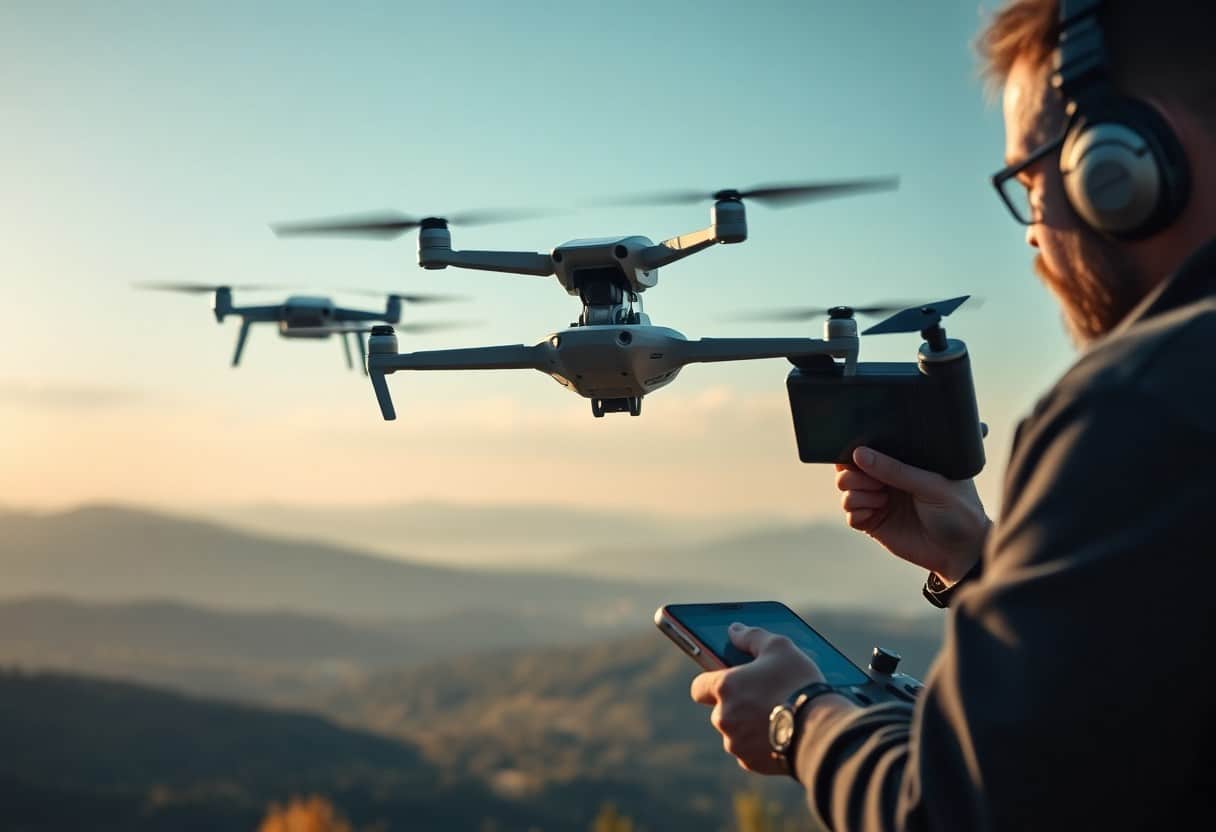
Post-Production Tips
Improving your drone filming skills is as important as post-production. Understanding the basic functions and usage of video editing software is essential, and you can learn more about it through theWhat aerial composition tips make your drone photography stand out?Come and learn the tricks of the trade in depth. With these post-production tips, you'll be able to take your final product to new heights.
Editing Software Overview
Using the right editing software is crucial for post-production of drone videos. Common editing software such as Adobe Premiere Pro, Final Cut Pro, and DaVinci Resolve offer powerful editing and effects capabilities. These programs not only allow simple editing, but also add rich visual effects to help you create more attractive videos.
Color Correction and Tinting
Color correction and color grading are key steps in improving the quality of drone videos. ByCorrect exposure, contrastrespond in singingcolor balanceYou can make your movie more visually appealing. The right color palette can enhance the atmosphere and emotion of the film, giving the audience a deeper sense of immersion. It is recommended that you learn these techniques in depth becauseIncorrect color processing may result in a less than desired end result.Choosing the right color style also significantly affects the viewer's perception.
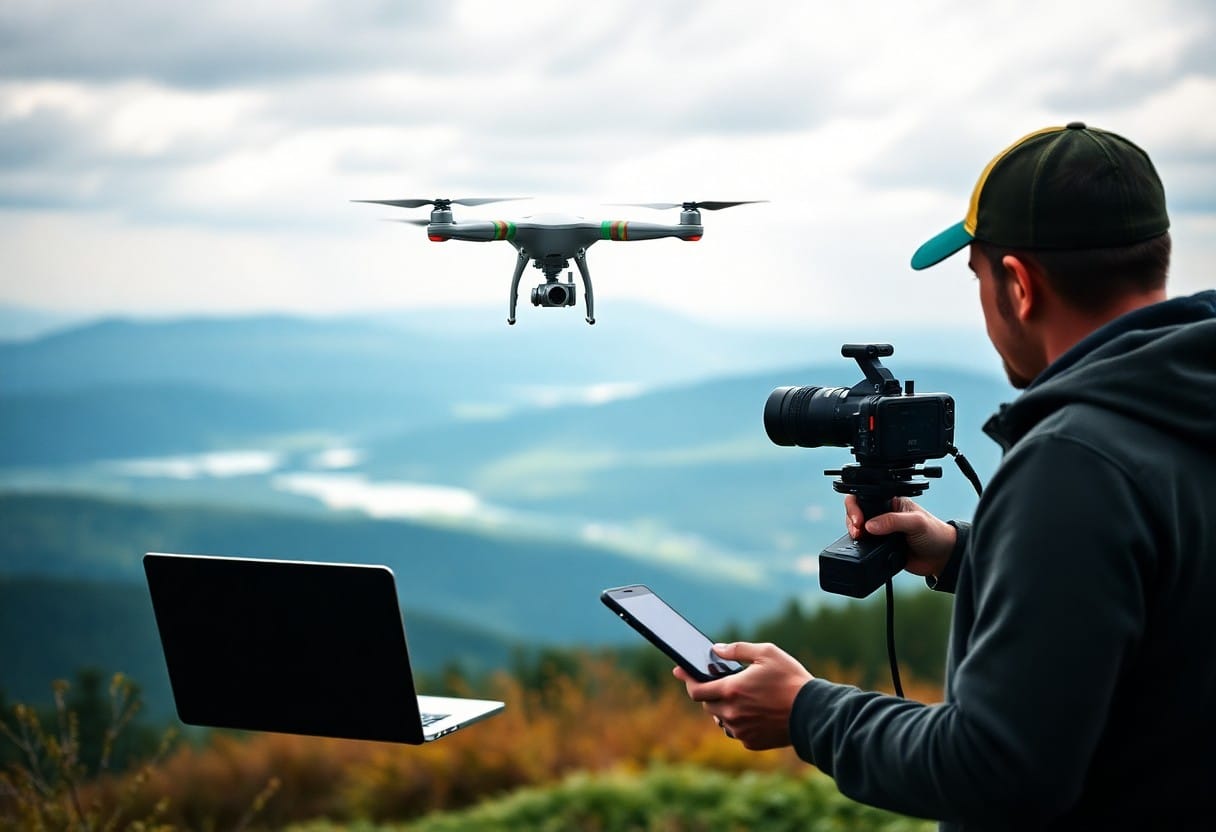
Expand your skill set
Expanding your skill set is essential in improving your drone photography skills. You can find additional learning resources such asStep by Step - The 6 Best Techniques for Drone 3D ModelingThis will help you gain access to new knowledge and techniques that will enhance your creative photography.
Advanced Photography Tips
Advanced photography techniques can make your work more professional and engaging. Here are some tips for you to consider:
- Use sliding photography to add motion.
- Try an overhead perspective to capture the spectacular view.
- Combine different lenses for a variety of effects.
- Apply aerial tracking for dynamic effects.
| Photography Tips | Description |
|---|---|
| Slide Photography | Add motion to the screen. |
| Overhead view | Capture the spectacular view. |
| Versatile Lens | Combine different lenses to get different effects. |
| Aerial Tracking | Motion picture effects are presented. |
Explore different landscapes
Exploring different landscapes can enhance your creativity and photographic vision. Whether it's among the skyscrapers of a city or the vast expanse of nature, you'll find yourself in the middle of the action.Each scene provides a unique visual effectYou will be able to enhance the impact and diversity of your work through a variety of environments. Through a variety of environments, you will be able to effectively enhance the impact and diversity of your work, and learn how to utilize different shooting techniques in each scene to consolidate your artistic style.
Five Key Steps to Improve Your Drone Photography Skills
By following these five key steps, you can significantly improve your drone photography skills. First, master the basics of flying, then familiarize yourself with different camera angles and lens usage. Next, learn to utilize the proper camera equipment and post-production software to create a more professional look. Don't forget to do pre-planning and location scouting to capture the best images. Finally, practicing and receiving feedback will help you become a great drone photographer.
Frequently Asked Questions
Q: How to choose the right aerial equipment to enhance my shooting skills?
A: Choosing the right aerial photography equipment is very important. First of all, you should consider your budget and needs. It is recommended to start with a 4-axis flyer with stabilization and choose a model equipped with a high-definition camera. In addition, using equipment with stabilizers or gimbals can further improve the stability and smoothness of the images.
Q: What basic flying skills should I learn to improve my aerial photography?
A: Learning basic flying skills is the key, including understanding how to control the operation of the aircraft such as ascending, descending, turning and hovering. It is recommended to practice in an open area and familiarize yourself with different flight modes, such as GPS mode and manual mode, in order to adjust the flight mode according to the shooting needs.
Q: How do I plan my shoot to get the best results?
A: Before shooting, you should conduct a site survey to understand the light, wind direction, and characteristics of your surroundings. Consider using a shot planning tool to plan lens movement and camera angles, and shoot at the right time to take advantage of the best natural light. Thinking about the composition of the shot in advance will improve the quality of your work.
Q: What are the most important steps to take in post-production?
A: Post-production is the key step to improve the quality of your movie. First of all, use professional editing software to organize the footage, and then do color adjustment and sound processing to make the video more attractive. In addition, learning how to use editing techniques such as jumps and fades can effectively enhance the storytelling effect of your movie.
Q: How do I choose the right camera angle to capture the best images?
A: The angle at which you shoot will greatly affect the quality of the image. It is recommended to explore different heights and distances, from overhead shots, sideways flights to low-level fast passes, each of which has a different effect. In addition, the use of dynamic shooting techniques, such as parallel tracking and circular movement, can bring more interesting visual effects.
Q: How do I cope with the weather when shooting?
A: Weather is an important factor in aerial photography. Before shooting, you should check the weather forecast to avoid shooting in unfavorable weather such as gusty wind or heavy rain. If you encounter sudden weather changes, you should prepare flexible shooting solutions, such as using brightening filters on cloudy days, or choosing to shoot clouds and rainy scenes.
Q: How can I continue to improve my aerial photography skills?
A: Continuous learning and practice are important ways to improve your aerial photography skills. It is recommended to attend professional aerial photography courses or online tutorials to learn new techniques and experiences. In addition, watch other photographers' works regularly to get inspiration from them and try different shooting styles and themes to challenge yourself and improve your ability.
